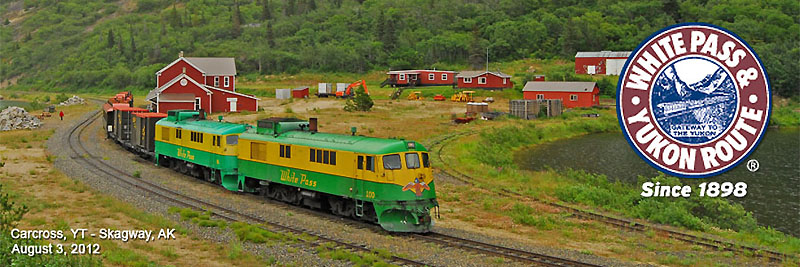
In August 1896 three prospectors, George Carmack and his wife Kate, Skookum Jim and Dawson Charlie stopped along a tributary of the Klondike River and discovered gold. After staking their own claims, word spread and prospectors in the region raced to stake their own claims before winter settled in.
It wasn't until the following June that news of the discoveries began leaving the region on the freight ships heading south to San Francisco and Seattle. Newspapers announced the travelers arrived with almost $1,139,000 (approximately $1,000-million today). Seeing an opportunity to strike it rich, more than 100,000 adventurers, prospectors, outfitters and businessmen surged west to ports along the Pacific Coast. The great Klondike Gold Rush was on.
Most landed in Skagway or Dyea in the Alaskan pan handle, where getting to the gold fields meant climbing over the summit via either the Chilkoot or White Passes to Bennett Lake, BC, where they could then travel by water up through Whitehorse and on to the gold fields near Dawson City. But it wasn't a simple hike. The Northwest Mounted Police required everyone to bring one year's worth of supplies - about two tons - which required the average person to make roughly 30 trips across the pass before entering Canada. Reaching Bennett Lake in the winter there was nothing to do but wait and build a raft. When the ice finally cleared in the spring, some 7,400 boats and rafts entered the lake - all on a single day.
In 1897 the Canadian government received proposals for 32 Yukon railroads, but only by combining the efforts of three companies was one actually realized. Beginning in May 1898, at the same time the rafts were racing across Bennett Lake, dynamiting began on the railroad. The builders quickly faced many challenges from the mountains; tunnels had to be bored, bridges built to cross ravines, and water falls that descended more than 1,000 feet to the valley below - at times the line seemed to cling to the shear face of the cliffs.
Amazingly the route opened only three years later; a marvel of engineering and construction. Now operating under the name of the White Pass & Yukon Railway Company plans were made to extend the rail line all the way to Whitehorse, but seeing the opportunity to cash in on the faster water route, the WP&YR constructed stern paddle-wheelers to complete the route. But by this time, much of the traffic from the gold rush stampede had died down.
In the years to come, the WP&YR would reach Whitehorse and become far more important than a transport for adventure seekers. Prospecting gave way to commercialized mining for gold, silver, copper and lead, and the WP&YR possessed the shortest route to a harbor. During the Second World War much of the equipment and construction materials needed for the Alcan (Alaska-Canada) Highway were carried on the cars of the WP&YR.
Eventually however, the Alcan Highway would be the end of the WP&YR. Traffic declined until 1982 when metal prices plummeted. Ore traffic the railroad had been surviving on was gone and the railway shut down.
While the freight stopped moving, people had returned by the thousands, thanks to the cruise ships stopping in Skagway. In 1988 the railroad reopened to carry tourists. From Skagway, passengers board vintage railcars (some dating back to the early days of the 20th century) and climb the mountains before crossing the summit and entering Canada. Stopping for customs in Fraser, BC, the trains either turn around to return to Skagway (a typical cruise ship excursion), or continue on to Bennett Lake and Carcross in the Yukon. From Carcross, passengers climb aboard a tour bus and reach Whitehorse by road.
So what was it that made me want to travel to the Yukon and ride a train? Well, to be honest, my kids. My two year old son loves everything mechanical and watches a television show called Mighty Machines, which featured the trains of the WP&YR in one of its episodes. For him to see them in person seemed like a pretty cool thing. Plus, it would expose our whole family to a part of our country most Canadians seem to forget about.
Skagway itself is a quiet little community of about 500 people, with only two or three restaurants, a few shops and a couple museums. There's a grocery store but the journey from Seattle triples the price tags. My family walked around for a bit and then let the kids run wild in a local park before boarding a bus for the return to Whitehorse.
Even now, after returning home, I still can't describe the beauty of the trip. My wife and kids enjoyed themselves, and all I can say is that if you get the chance to ride the WP&YR take it.







